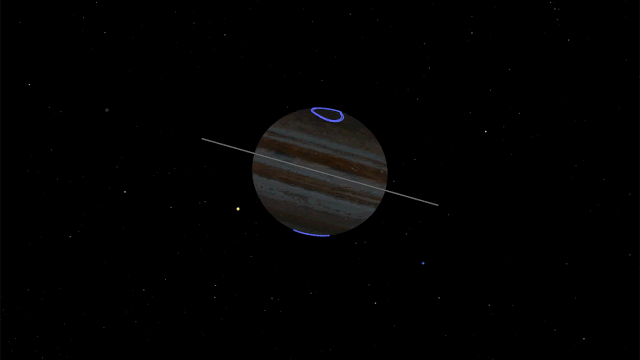Juno Snaps Dazzling Images As It Prepares to Jump Jupiter's Shadow
oooh, aaah.

While readying itself to jump Jupiter's shadow, NASA's Juno spacecraft continues to capture the beauty of our distant, gaseous neighbor.
Juno launched in 2011 with the explicit purpose of imaging and collecting data on Jupiter so that scientists back on Earth could better piece together its evolution and origins. The probe has been traveling around the planet at about 384 miles per hour (618 kilometers/h) since it arrived and completed orbit insertion in 2016, and will continue to do so until it deorbits towards Jupiter in July 2021.
Of the many instruments onboard the craft, the JunoCam camera is the favorite of many who follow the mission. The camera/telescope has captured seemingly endless images of Jupiter's swirling beauty.
Related: Jupiter's Great Red Spot in Pictures
Below, you can check out images that Juno has captured, including Jovian jet streams, Jupiter's Great Red Spot, swirling clouds and more:





While Juno is collecting data and snapping stunning shots of Jupiter, it is also working hard to remain optimally functional in orbit. On Oct. 1, Juno completed a tricky maneuver that will likely keep the instrument from an early demise and allow it to continue to capture stunning imagery of Jupiter.
During the maneuver, which lasted an extraordinary 10.5 hours (five times longer than any other maneuver using the same system), the craft executed a long burn with its reaction-control thrusters. Using up about 160 pounds (73 kg) of fuel, the craft drastically shifted its orbital velocity by 126 mph (203 km/h).
Get the Space.com Newsletter
Breaking space news, the latest updates on rocket launches, skywatching events and more!
With the extended burn and orbital shift, Juno is preparing to essentially "jump" across Jupiter's shadow. Because the craft's batteries are solar-powered (and would not be able to charge while in the shadow), the 12 hours that it would have otherwise taken the craft to cross the shadow would have entirely drained its batteries. With no battery life and in the cold of the shadow, it's likely that the craft never would have woken up, according to a NASA statement.
"With the success of this burn, we are on track to jump the shadow on Nov. 3," Scott Bolton, Juno principal investigator at the Southwest Research Institute in San Antonio, said in the same statement. "Jumping over the shadow was an amazingly creative solution to what seemed like a fatal geometry. Eclipses are generally not friends of solar-powered spacecraft. Now instead of worrying about freezing to death, I am looking forward to the next science discovery that Jupiter has in store for Juno."
- Photos: Most Powerful Storms of the Solar System
- In Photos: Juno's Amazing Views of Jupiter
- Behold! Jupiter Is a Breathtaking 'Marble' in This NASA Juno Photo
Follow Chelsea Gohd on Twitter @chelsea_gohd. Follow us on Twitter @Spacedotcom and on Facebook.
Join our Space Forums to keep talking space on the latest missions, night sky and more! And if you have a news tip, correction or comment, let us know at: community@space.com.

Chelsea “Foxanne” Gohd joined Space.com in 2018 and is now a Senior Writer, writing about everything from climate change to planetary science and human spaceflight in both articles and on-camera in videos. With a degree in Public Health and biological sciences, Chelsea has written and worked for institutions including the American Museum of Natural History, Scientific American, Discover Magazine Blog, Astronomy Magazine and Live Science. When not writing, editing or filming something space-y, Chelsea "Foxanne" Gohd is writing music and performing as Foxanne, even launching a song to space in 2021 with Inspiration4. You can follow her on Twitter @chelsea_gohd and @foxannemusic.